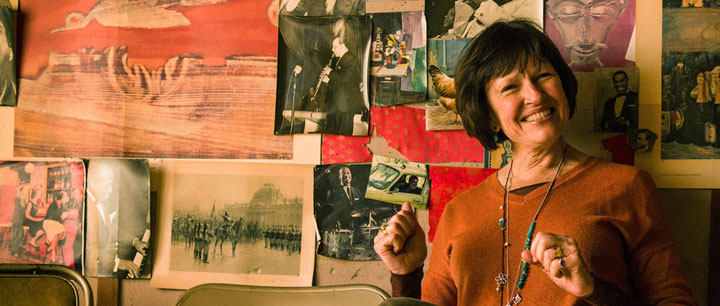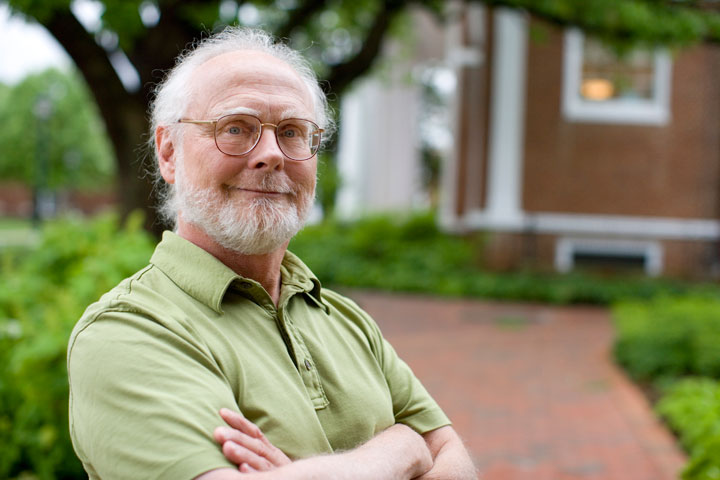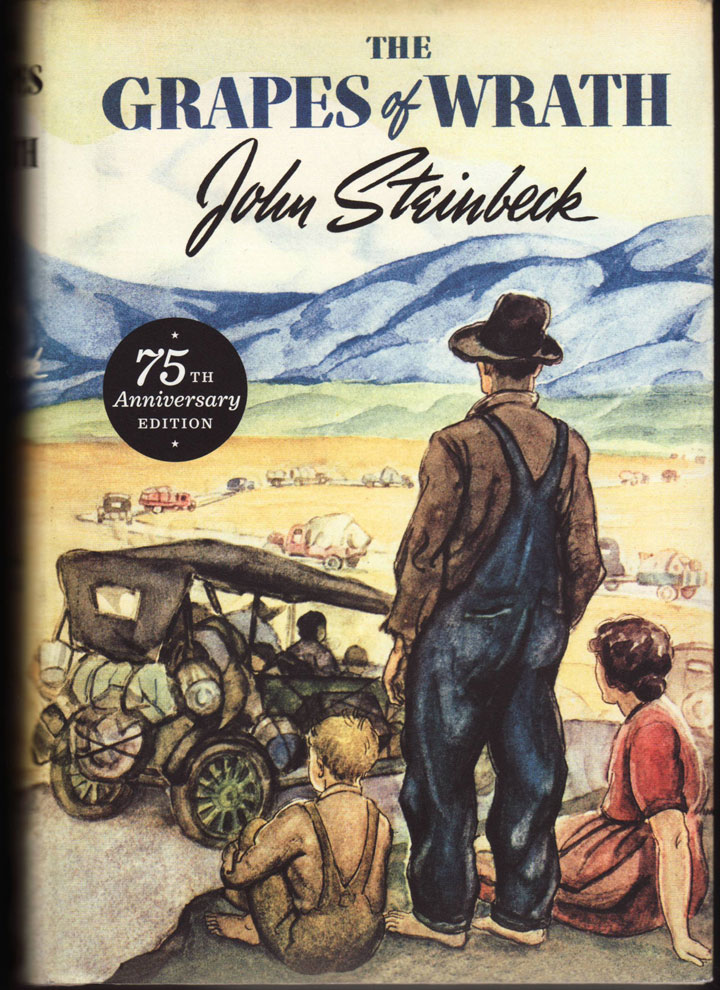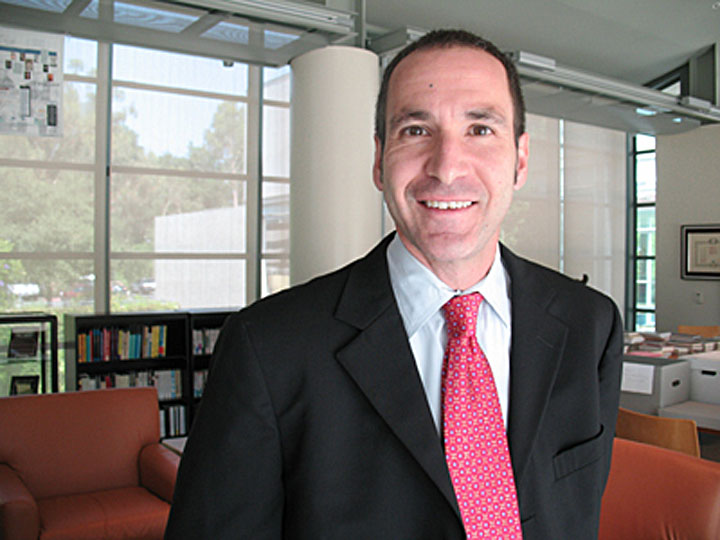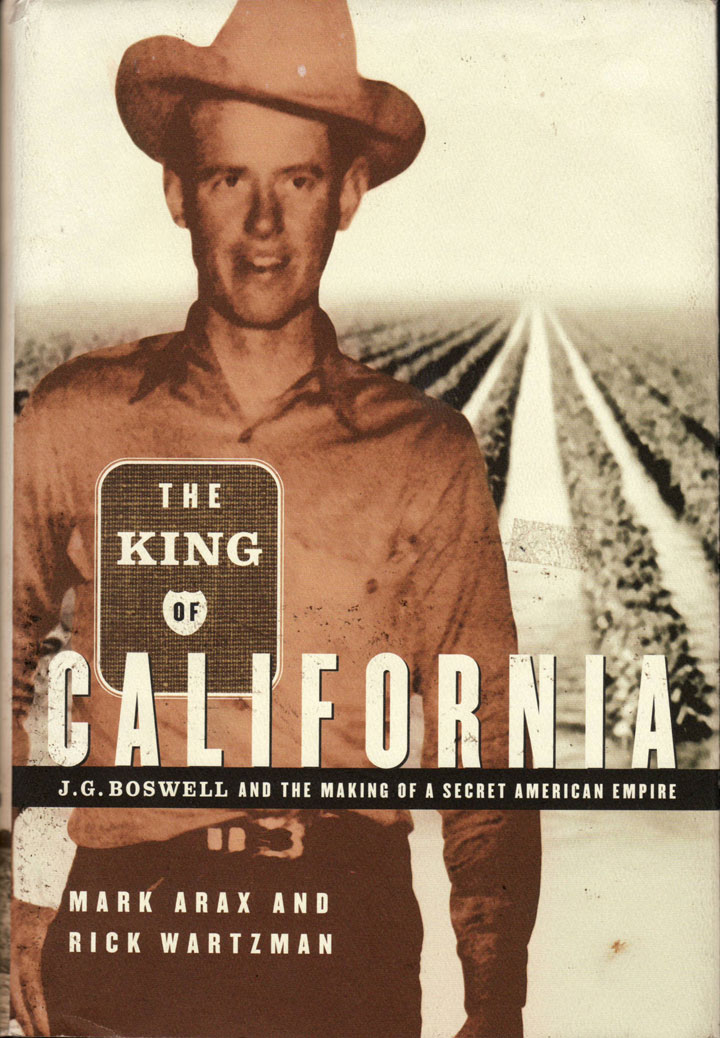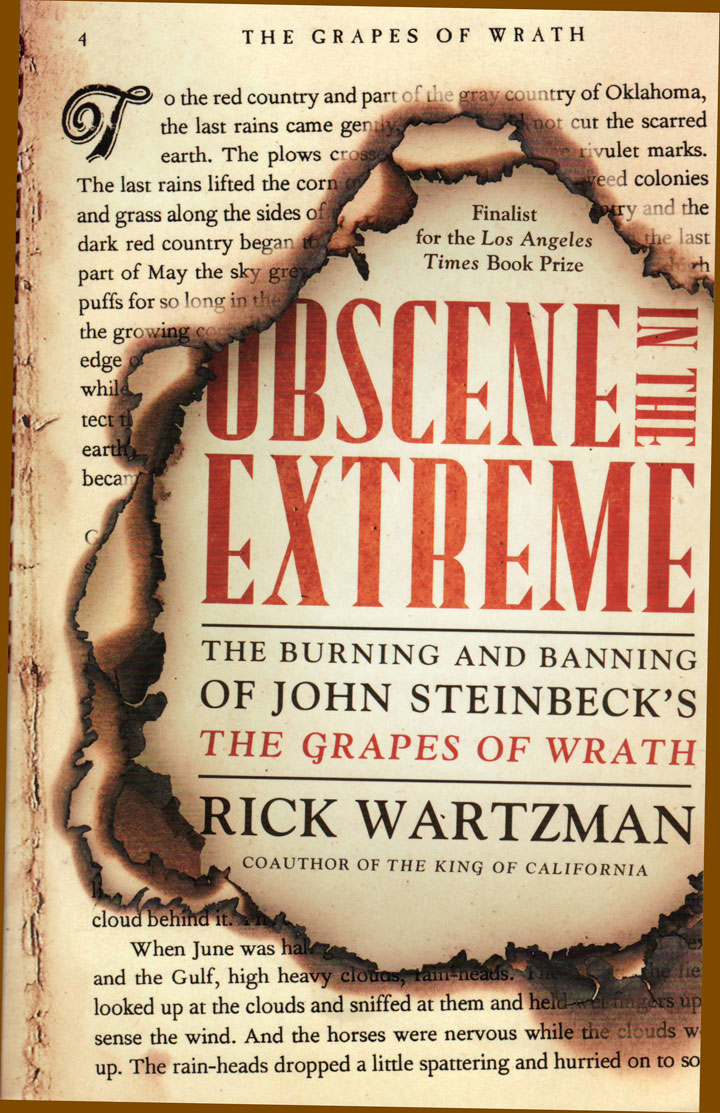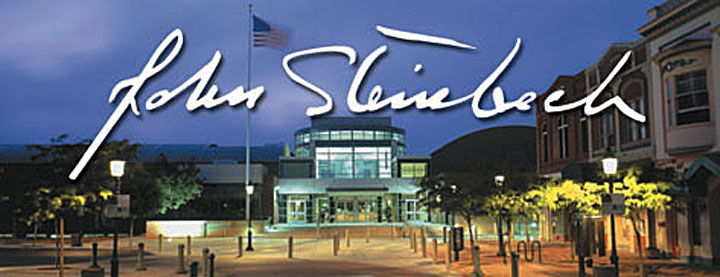 On May 3 experts from the University of Virginia, San Jose State University, and Claremont Graduate University enlightened 350 attendees of the 34th Steinbeck Festival—held at the National Steinbeck Center in Salinas, California—about The Grapes of Wrath. As different in style as The Grapes of Wrath is from Gone With the Wind, each of the speakers—Susan Shillinglaw, a professor of English at San Jose State University; Stephen Railton, Professor of American Literature and Digital Humanities at the University of Virginia; Rick Wartzman, the executive director of the Drucker Institute at Claremont Graduate University—aligned Steinbeck’s masterpiece with matters of abiding importance, illuminating aspects of an enduring novel that still shocks and surprises.
On May 3 experts from the University of Virginia, San Jose State University, and Claremont Graduate University enlightened 350 attendees of the 34th Steinbeck Festival—held at the National Steinbeck Center in Salinas, California—about The Grapes of Wrath. As different in style as The Grapes of Wrath is from Gone With the Wind, each of the speakers—Susan Shillinglaw, a professor of English at San Jose State University; Stephen Railton, Professor of American Literature and Digital Humanities at the University of Virginia; Rick Wartzman, the executive director of the Drucker Institute at Claremont Graduate University—aligned Steinbeck’s masterpiece with matters of abiding importance, illuminating aspects of an enduring novel that still shocks and surprises.
San Jose State University’s Susan Shillinglaw on Teaching
The author of two books in one year—John and Carol Steinbeck: Portrait of a Marriage and On Reading “The Grapes of Wrath”—Susan Shillinglaw has taught, written, and organized around Steinbeck at San Jose University for 25 years. So familiar with her subject that she can speak flawlessly without notes, the San Jose State University President’s Scholar and National Steinbeck Center Scholar-in-Residence traced the roots of The Grapes of Wrath back to rural Oklahoma, the home of a real-life migrant family named Joat, and connected it to the contemporary concept of one-world ecology, first explored by Steinbeck and Ed Ricketts in the 1930s.
Susan Shillinglaw has taught, written, and organized around Steinbeck at San Jose University for 25 years.
Shillinglaw’s deft description of the four levels of meaning in Steinbeck’s novel unified by this concept seemed perfectly designed to make the long book easier to embrace for classroom teachers, a significant percentage of her audience. The San Jose State University veteran explained why reading long books is still important for students with an apt analogy from personal experience. Earlier in the week, she said, she had attended the stage version of Steinbeck’s Of Mice and Men in New York. She noted that Hilton Als, the New Yorker magazine drama critic, panned the production for depending on celebrity casting to draw young viewers to an old play.
Shillinglaw’s deft description of the four levels of meaning in Steinbeck’s novel seemed perfectly designed to make the long book easier to embrace for classroom teachers.
Shillinglaw stated that it was the first time she ever saw a New York audience stand and clap so quickly at the end of a show. If it takes a James Franco to get youngsters to attend live theater, she wondered, what’s the harm? They were there, they were moved, and they loved what they saw. If it takes a teacher’s prodding to induce kids to read The Grapes of Wrath, that’s worth the time and effort, too, she added. Although her students at San Jose State University “self-select” by enrolling in her Steinbeck course, she noted that frequent quizzes are necessary to keep them on track, particularly with long books like The Grapes of Wrath.
The University of Virginia’s Stephen Railton on Reading
Like me, Susan Shillinglaw attended graduate school at the University of Virginia’s rival, the University of North Carolina at Chapel Hill. Noting that at one time the Department of English was the University of Virginia’s largest department, she provided a smooth transition for the speaker who came next, the University of Virginia English professor Stephen Railton. Shillinglaw’s focus on Steinbeck is singular: her knowledge of the writer’s life is encyclopedic, and her observations about his work are splendidly spontaneous. Railton’s style is more structured and his scope more synoptic, placing Steinbeck in the broader context of American literary history. Unlike Shillinglaw, Railton delivered his remarks from a prepared script, but that didn’t slow him down. Could it be that he speaks so brilliantly in public because he comes from the University of Virginia, an institution founded by Thomas Jefferson, the U.S. President who wrote effortlessly but had to work hard to project his voice?
Railton’s style is more structured and his scope more synoptic, placing Steinbeck in the broader context of American literary history.
In Chapel Hill we complained that the University of Virginia seemed set on cornering the American literature market. Railton’s presentation suggested that our concern was justified. The editor of works by and about Cooper, Emerson, Whitman, and Twain, Railton has developed digital libraries of Twain, Faulkner, and Harriet Beecher Stowe, the author of the other great protest novel, Uncle Tom’s Cabin. As amply demonstrated in his comments about The Grapes of Wrath, this makes Railton a kind of humanities engineer, a new and interesting breed on campus. He certainly knows where the connecting lines lie under the surface of American writing from 19th century Transcendentalism to Naturalism and Modernism, mapping the convergence of these movements in John Steinbeck with ease and connecting The Grapes of Wrath with equal precision to Uncle Tom’s Cabin and to The Wasteland. Consider the relationship of three “Tom’s,” he suggested: Stowe’s Uncle Tom, Steinbeck’s Tom Joad, and the Wasteland poet from St. Louis, Thomas Stearns Eliot.
A thought that profound is a paper in itself, but Railton moved right on, connecting Steinbeck to other writers in ways equally ingenious. For example, he noted that the author of the “sentimental” novel The Grapes of Wrath was at heart a literary modernist who heeded Ezra Pound’s call to “make it new” in his writing. But Steinbeck differed fundamentally from Pound, Eliot, and Faulkner, modern writers whose dislike of sentiment created “a kind of gated community of aesthetics” in their work. Unlike his more detached contemporaries, Steinbeck was emotionally engaged, writing “not out of curiosity but impatience, even anger” and creating in Tom Joad “an existential member of the Lost Generation.” Steinbeck also differed from Naturalists such as Dreiser, Norris, and Crane, students of social Darwinism who wrote about individuals victimized by power in the shadow of the Panic of 1893. The author of The Grapes of Wrath was a meliorist who believed in the possibility of progress. Writing in the deeper shadow of the Great Depression, Steinbeck felt that the natural order for humanity was “evolutionary change, not just unremitting struggle.”
The author of The Grapes of Wrath was a meliorist who believed in the possibility of progress.
So satisfying an insight offers a tempting place to stop, but Railton also looked closely at Steinbeck’s text, observing that The Grapes of Wrath opens on a wasteland, like Eliot’s poem, and that the journey of Tom Joad parallels that of Stowe’s Uncle Tom. Rose of Sharon loses her baby and her brother never becomes an uncle, but unlike Stowe’s protagonist—whose hope is for Heaven—Joad’s breakthrough is post-Christian, an updated version of Emerson’s Over-Soul in which all people participate. Tom learns this religion from the ex-preacher Casy, but unlike Casy, Tom fights back rather than forgiving, “a warrior convert” to the new gospel of social justice. The Grapes of Wrath, Railton concluded, is John Steinbeck’s “Newer Testament.” As if in benediction, the University of Virginia professor sang Casy’s “Yessir, that’s my Savior” to the tune Steinbeck had in mind: “Yessir, that’s my baby.” Like Thomas Jefferson, the self-described “aging hippie” from the University of Virginia has an educated ear.
Claremont Graduate University’s Rick Wartzman on the Burning and Banning of Steinbeck’s The Grapes of Wrath
Susan Shillinglaw extemporized without notes. Stephen Railton performed from a script. Rick Wartzman, the third speaker of the day, projected images from his laptop. It was an appropriate medium for the executive director of Claremont Graduate University’s Drucker Institute—described by Time.com as “a social enterprise whose mission is strengthening organizations to strengthen society.” A former writer and editor at The Wall Street Journal and Los Angeles Times, Wartzman is the author of award-winning investigations of political power in California—The King of California: J.G. Boswell and the Making of a Secret American Empire (with Mark Arax) and Obscene in the Extreme: The Burning and Banning of John Steinbeck’s The Grapes of Wrath. Each of these books explores an archetypal conflict: the price in individual liberty paid to oligarchic greed, the story at the heart of Steinbeck’s masterpiece. Shillinglaw and Railton illuminated the novel’s narrative, context, and connections. Wartzman detailed its aftermath.
Shillinglaw and Railton illuminated the novel’s narrative, context, and connections. Wartzman detailed its aftermath.
Prior to The Grapes of Wrath, a pair of California writer-activists admired by Steinbeck—Jack London and Sinclair Lewis—published prescient novels about a future United States under fascism. George Orwell cited the influence of London’s book on the writing of 1984, the British bestseller that continues to rival The Grapes of Wrath in global popularity. Neither of the earlier novels—London’s The Iron Heel (1902), Lewis’s It Can Happen Here (1935)—is read much anymore, but Steinbeck would have been familiar with both. If he voted in the general election of 1934, he likely voted for the writer-activist Upton Sinclair, the Democratic candidate for Governor of California. A celebrity socialist with popular appeal, Sinclair was defeated by the well-funded campaign of disinformation waged by California’s corporate elite—including Wartzman’s former employer, the Los Angeles Times. Frank Merriam, the establishment candidate, won the Governor’s seat.
Sinclair’s populist policies prevailed four years later, when Culbert Olson beat Merriam to become California’s first Democratic Governor since 1895. As Wartzman observed, the state’s corporate interests were understandably alarmed. A Mormon atheist from Utah, Olson had campaigned for Sinclair in 1934 and supported President Roosevelt’s New Deal. Remarkably, Olson refused to say “so help me God” when his oath of office was administered by a California Supreme Court Justice with the name William Waste. Olson dared to challenge the influence of the Catholic Church in California’s system of public education, provoking the wrath of John Cantwell, the archbishop of Los Angeles, and Archbishop John Mitty of San Francisco. Virtually alone among elected officials in the country’s most geographically exposed state, Olson opposed the internment of Japanese-Americans following Pearl Harbor. In 1942 he lost to the Republican Earl Warren, future Chief Justice of the United States Supreme Court.
Olson opposed the internment of Japanese-Americans following Pearl Harbor. In 1942 he lost to the Republican Earl Warren, future Chief Justice of the United States Supreme Court.
When Olson took office on January 2, 1939, California’s power structure shook, setting the stage for the burning and banning of The Grapes of Wrath. Wartzman’s narrative of events between April and August 1939 was dramatic. During that turbulent time, Carey McWilliams—a Los Angeles writer-activist allied with Sinclair and employed by Olson—published Factories in the Field, a survey of migrant worker conditions in California caused by the rapacity of the state’s corporate landowners. McWilliams’ dry statistics vindicated Steinbeck’s angry book, blunting the impact of counter-Grapes of Wrath efforts by writers such as Ruth Comfort Mitchell, Steinbeck’s summer neighbor in genteel Los Gatos.
McWilliams’ dry statistics vindicated Steinbeck’s angry book, blunting the impact of counter-Grapes of Wrath efforts by writers such as Ruth Comfort Mitchell, Steinbeck’s summer neighbor in genteel Los Gatos.
Mitchell may not have been related to the Georgia author of the same name who wrote Gone With the Wind, the 1936 bestseller that became an award-winning film the year The Grapes of Wrath was published. But in the context of Stephen Railton’s remarks, Margaret Mitchell’s pro-Confederacy fantasy can be read as a work of delayed anti-Uncle Tom’s Cabin fiction; Wartzman noted that two-dozen anti-Uncle Tom books appeared during Harriet Beecher Stowe’s lifetime. Ruth Comfort Mitchell’s Of Human Kindness, a polite work written to counter the perceived obscenity of The Grapes of Wrath, was quickly forgotten. Gone With the Wind remains second only to the Bible in continuing U.S. sales, far ahead of The Grapes of Wrath, its spiritual opposite.
Who burned The Grapes of Wrath when it first appeared? In Bakersfield, California, Clell Pruett—a man who hadn’t read the book—posed for the camera as he lit the match. Pruett’s employer was Bill Camp, head of the anti-labor, anti-Grapes of Wrath Associated Farmers organization in Kern County; Camp enlisted Pruett for the photo-op to prove that real farm workers didn’t appreciate how Steinbeck had portrayed them. Following Pearl Harbor, Pruett left California and returned to Missouri to mine lead. That is where Rick Wartzman interviewed Pruett not long before he died. Pruett still hadn’t read The Grapes of Wrath but promised Wartzman that he would. When he did, he told Wartzman that reading hadn’t changed his mind.
In Bakersfield, California, Clell Pruett—a man who hadn’t read the book—posed for the camera as he lit the match.
Pruett’s feelings about The Grapes of Wrath were shared by people in Steinbeck’s hometown, where a 1936 strike by lettuce-packers was suppressed and The Grapes of Wrath was later burned. Like Jack London and Sinclair Lewis, John Steinbeck feared fascism in America and thought he recognized its signs in California. A dramatic instance involved Salinas and the violent reaction of the town’s citizens to the 1936 lettuce strike. Steinbeck’s response was L’Affaire Lettuceburg, a vigorous denunciation of local power brokers in short-fiction form. The piece was so scathing that Steinbeck—on the advice of his wife and in the interest of his safety—retracted the manuscript and refused to let it be published, proactively burning his own book. As I sat in the National Steinbeck Center audience listening to the stellar speakers who had come to Salinas from San Jose State University, the University of Virginia, and Claremont Graduate University, I pondered the remark about John Steinbeck made by the town’s former mayor in his morning introduction: “He used us in life; we use him in death.”
